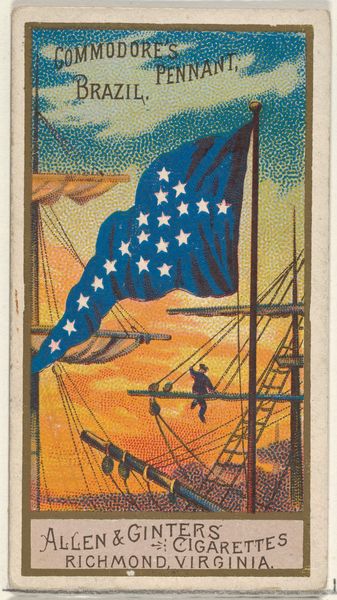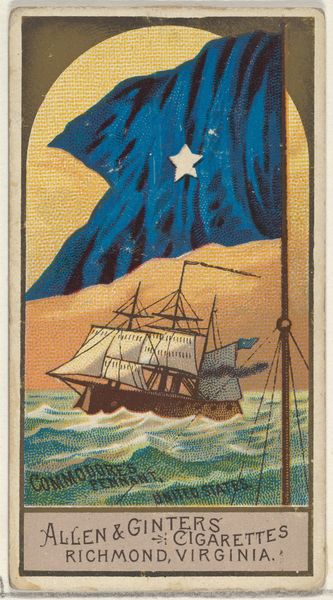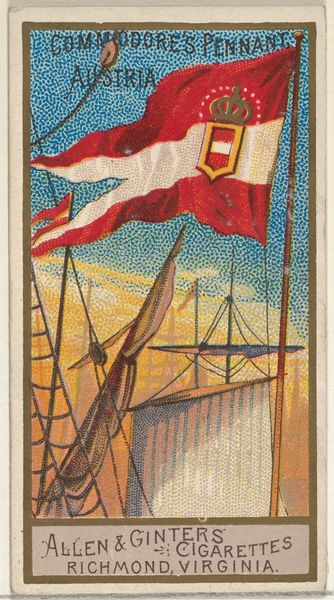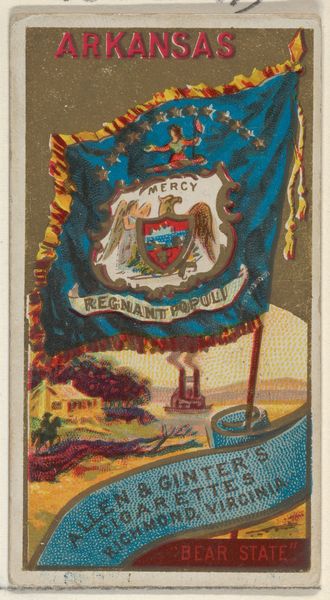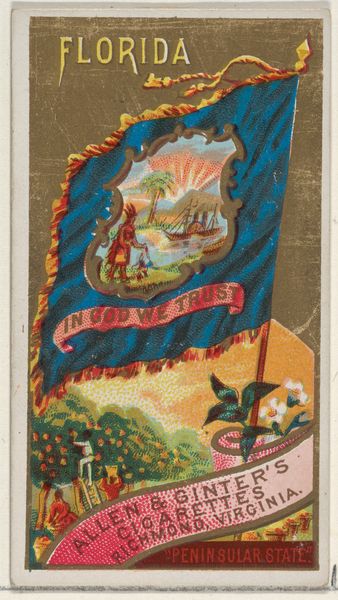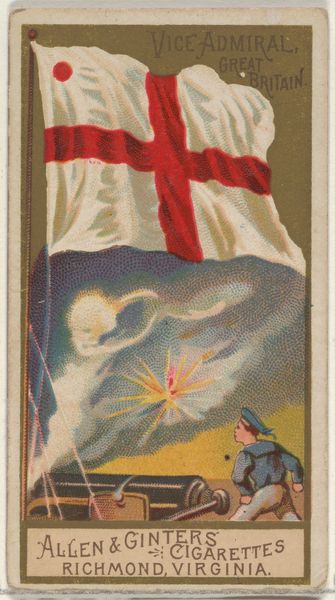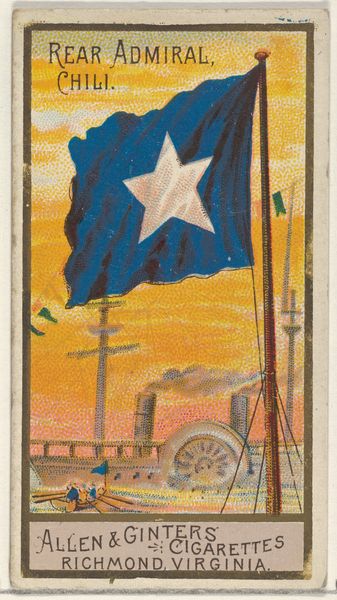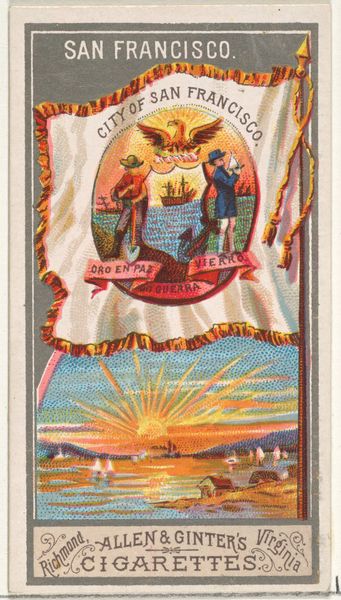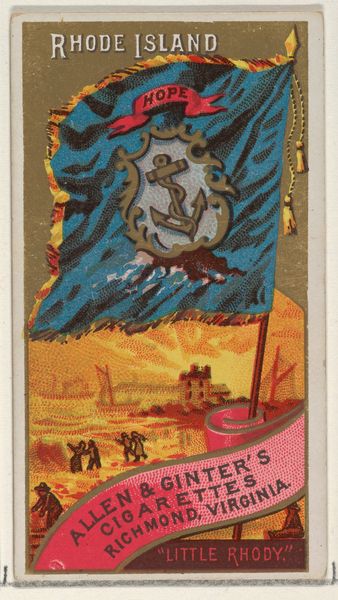
Vice-Admiral, United States, from the Naval Flags series (N17) for Allen & Ginter Cigarettes Brands 1886 - 1891
0:00
0:00
drawing, print, watercolor
#
drawing
#
water colours
# print
#
caricature
#
figuration
#
oil painting
#
watercolor
#
decorative-art
#
watercolor
Dimensions: Sheet: 2 3/4 x 1 1/2 in. (7 x 3.8 cm)
Copyright: Public Domain
Curator: Here we have "Vice-Admiral, United States, from the Naval Flags series," created sometime between 1886 and 1891. It was produced for Allen & Ginter Cigarettes. What are your first thoughts? Editor: Well, immediately I'm struck by the peculiar combination of the delicate watercolor technique with its commercial purpose. It's meant to sell cigarettes! The textures—that rippling flag and the sunset’s soft gradation—are far more refined than you’d expect. Curator: Exactly! And that contrast speaks volumes about the era. These cigarette cards, small prints really, were enormously popular, reflecting and shaping popular culture. Here, the Navy flag is more than a symbol, it's a marketing tool, inextricably tied to the burgeoning consumer culture. Editor: It also seems like a very specific type of labor. These would have been quickly and efficiently reproduced, relying on the skill of the artist combined with print technology to meet market demands. I'm curious about the material qualities of both the drawing and the final printed card. Curator: That's right. Consider how imagery of military power becomes easily consumable, contributing to the era's nationalist sentiment. The watercolor almost romanticizes this symbol of state authority. The medium seems an odd choice when one might expect bolder imagery. Editor: The choice of watercolor lends a veneer of respectability, wouldn’t you say? Perhaps suggesting prestige to potential smokers? Allen & Ginter sought a refined appeal for their product, linking this ephemeral luxury to a recognizable symbol of the nation. Also I bet these cards circulated, getting crumpled in pockets! Curator: Undoubtedly! That materiality—the delicate card moving through people's hands and pockets—contrasts starkly with the monumentality usually associated with national symbols, thus becoming intimate objects of everyday consumption. Editor: This highlights a larger story. How visual arts can function as a form of material culture. Understanding the conditions of production and consumption reveals this small card has substantial cultural meaning far exceeding its physical presence. Curator: Agreed, by placing something as complex as national identity into such a quotidian format reveals fascinating contradictions. Its accessibility allowed it to be spread, and likely viewed and understood in various contexts across many social spheres. Editor: It seems even in the age of instant media, there's much to uncover when you trace an image back to the hands that crafted it, mass-produced it, and ultimately, consumed it. Curator: A vital point. Even now.
Comments
No comments
Be the first to comment and join the conversation on the ultimate creative platform.
